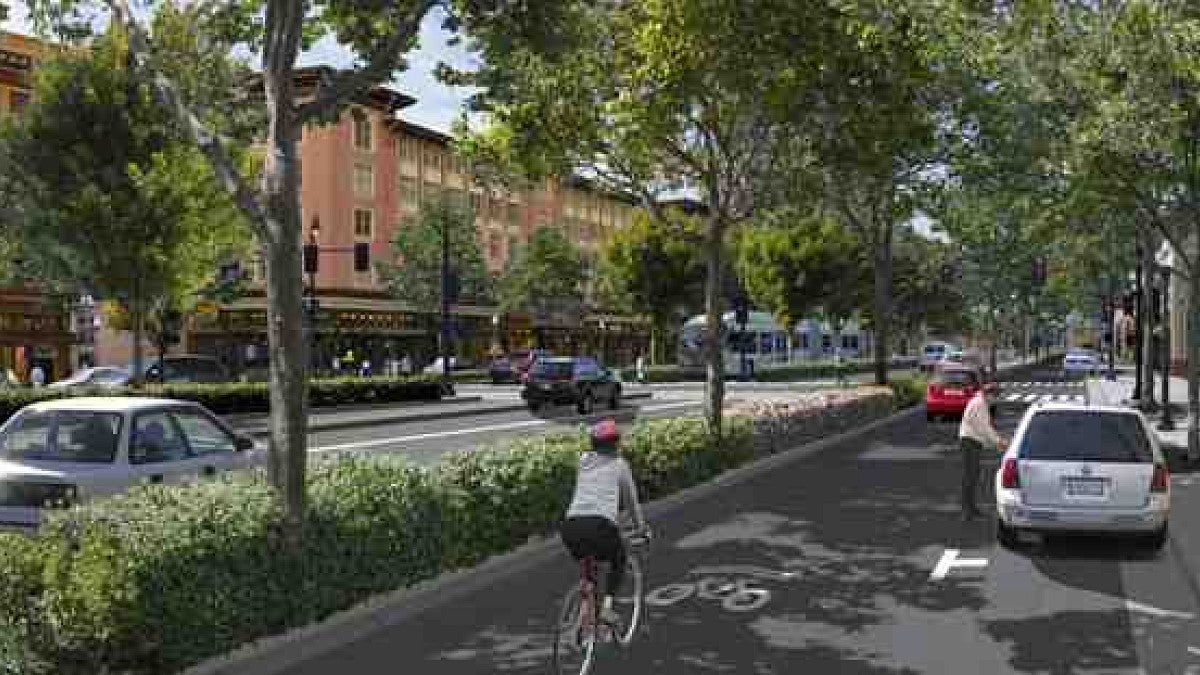In a conference room overlooking Franklin Boulevard, U.S. Rep. Peter DeFazio recently joined Eugene Mayor Kitty Piercy and interim UO President Scott Coltrane to discuss the future of the key thoroughfare that serves as an unofficial northern boundary of the main UO campus.
But a number of university buildings already lie north of Franklin, and more could come in the future. The April 8 meeting was a chance to discuss visions of what Franklin could be, with some of the possibilities laid out by Eugene governmental relations manager Lisa Gardner, campus planner Chris Ramey and Lane Transit District customer service and planning director Andy Vobora.
“Franklin Boulevard currently serves as a front door to campus that people typically drive by, and it divides 40 acres of university property on its north side. The shared vision would change the experience from one of driving by the edge of the campus to one of driving through the campus,” Ramey said.
Transforming Franklin Boulevard is part of a larger vision called the “River Districts” developed as a pilot project through the Lane Livability Consortium and funded by a federal sustainability grant. The River Districts plan extends from downtown Springfield to the EWEB Riverfront District in Eugene, including streets near the Willamette River, and has the potential to transform land uses along the river corridor.
“A redesign of the street will support the joint vision of a livable street that works for all travel modes and supports compact, mixed-use development,” Gardner said. “In the next 3 to 5 to 7 years we’ll have something fairly magnificent.”
Ramey detailed a campus plan that includes increased growth on the north side of the boulevard and the desire to incorporate a sky bridge that would improve safe connectivity.
“This would be a hugely transformational legacy leap across the boulevard to grow and expand our research facilities,” Ramey said. “Our sciences in particular are dependent on the interconnectivity of their spaces, and it contributes to the cross-disciplinary research that is at the core of the UO’s mission.”
The meeting follows a February visit by local officials in Washington, D.C., with DeFazio, who is currently the ranking member of the U.S. House Transportation and Infrastructure Committee. It gave the UO, city and LTD a chance to express their support for the reauthorization of federal surface transportation funding and for funds to study improvements to the corridor.
Known as an environmental assessment, such an analysis is the first step in eventually securing construction funds for road, transit and pedestrian infrastructure improvements.
—By Jen McCulley, Public Affairs Communications


